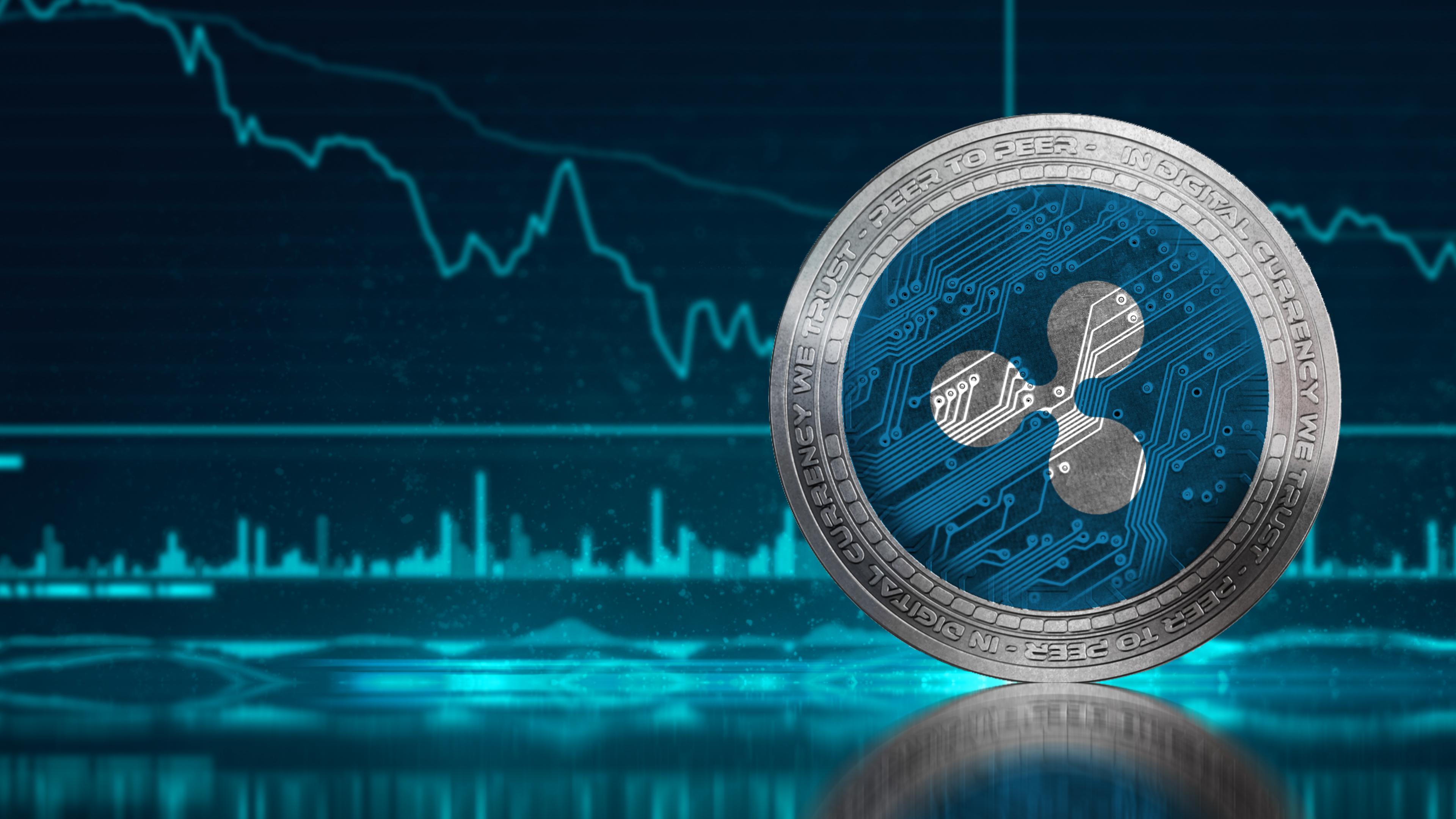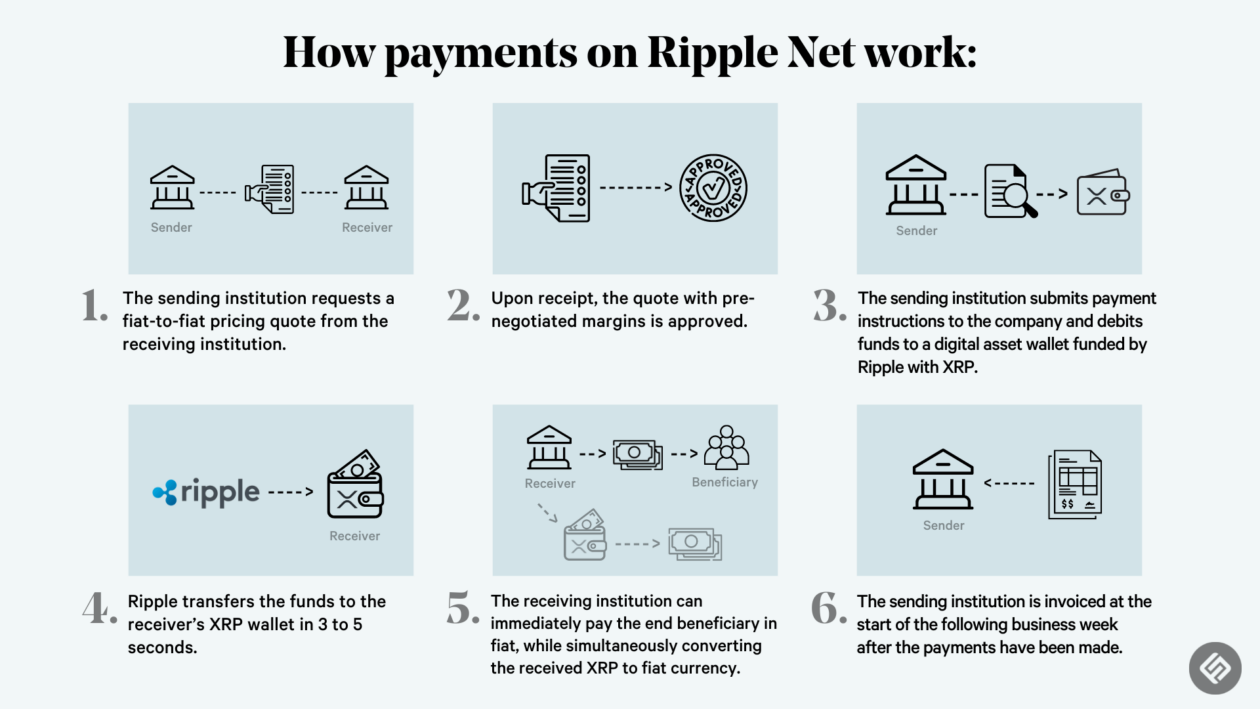Ripple and XRP

Ripple is a technology company that provides a global financial network and a digital asset called XRP. It was founded in 2011 with the aim of facilitating faster and more cost-effective cross-border payments. The company’s technology is built on a distributed ledger, similar to blockchain, but with its own unique features and functionalities.
Ripple’s Role in the Financial Industry
Ripple’s network aims to streamline cross-border payments by connecting banks, financial institutions, and payment providers. The network enables these entities to send and receive payments in different currencies quickly and efficiently. Ripple’s technology is designed to reduce the time, cost, and complexity associated with traditional cross-border payments, which often involve multiple intermediaries and lengthy processing times.
XRP: The Digital Asset
XRP is a digital asset that plays a crucial role within the Ripple ecosystem. It is a native cryptocurrency that acts as a bridge currency, facilitating transactions between different currencies on the Ripple network. XRP is designed to be fast, scalable, and cost-effective, making it an ideal solution for cross-border payments.
XRP’s Functionalities
XRP has several functionalities within the Ripple ecosystem:
- Cross-Border Payments: XRP can be used to facilitate cross-border payments between different currencies, reducing transaction times and costs.
- Liquidity Provision: XRP can be used to provide liquidity to the Ripple network, ensuring that transactions can be processed quickly and efficiently.
- Settlement of Payments: XRP can be used to settle payments between banks and other financial institutions, reducing the need for intermediaries and increasing efficiency.
Distinguishing Ripple and XRP
While Ripple and XRP are often mentioned together, they are distinct entities. Ripple refers to the company and its technology, while XRP is the digital asset that operates within the Ripple network.
Ripple: The Technology
Ripple is a technology company that provides a global financial network and a suite of products and services for financial institutions. It’s the platform that connects banks and other institutions to facilitate cross-border payments.
XRP: The Digital Asset
XRP is a cryptocurrency that acts as a bridge currency within the Ripple network. It facilitates transactions between different currencies, making cross-border payments faster and more cost-effective.
Key Differences
- Ripple: A company and its technology.
- XRP: A digital asset used within the Ripple network.
XRP’s Role in Cross-Border Payments

The global financial landscape is characterized by intricate networks of cross-border payments, a process often plagued by inefficiencies and complexities. Traditional payment systems, while established, struggle with limitations such as slow processing times, high transaction fees, and lack of transparency. XRP, a digital asset developed by Ripple, emerges as a potential solution to these challenges, aiming to revolutionize the way cross-border payments are conducted.
Speed and Efficiency of XRP Transactions
XRP transactions are significantly faster than traditional cross-border payments, which often take several days to complete. XRP’s decentralized ledger technology enables near-instantaneous settlement, reducing delays and improving the efficiency of international transactions. The speed of XRP transactions is a key advantage, particularly for businesses that require rapid funds transfer for global operations.
Cost-Effectiveness of XRP-Powered Transactions
XRP transactions are significantly more cost-effective than traditional methods, which often involve high fees charged by intermediaries. XRP’s low transaction fees make it an attractive option for businesses and individuals seeking to minimize expenses associated with cross-border payments. The cost savings achieved through XRP can be substantial, particularly for high-volume transactions.
Transparency and Traceability of XRP Transactions
XRP transactions are transparent and traceable, providing a clear audit trail of funds movement. Every transaction is recorded on the XRP Ledger, a public and immutable blockchain, ensuring accountability and security. This transparency is crucial for businesses and financial institutions seeking to comply with regulatory requirements and mitigate risks associated with cross-border payments.
Comparison of XRP with SWIFT
SWIFT, the Society for Worldwide Interbank Financial Telecommunication, is a global network facilitating secure financial messaging and payments. While SWIFT is widely used for cross-border transactions, it faces challenges related to speed, cost, and transparency.
- Speed: SWIFT transactions typically take 2-3 days to complete, whereas XRP transactions can be settled in seconds.
- Cost: SWIFT transactions involve high fees charged by intermediaries, while XRP transactions have minimal fees.
- Transparency: SWIFT transactions are not fully transparent, while XRP transactions are recorded on a public blockchain, providing complete traceability.
Ripple’s Ecosystem and Partnerships: Ripple Xrp

Ripple has cultivated a robust ecosystem of partnerships and integrations with financial institutions and businesses worldwide, aiming to streamline global financial transactions. These partnerships are critical for the adoption and success of Ripple’s solutions.
Key Partnerships and Integrations, Ripple xrp
Ripple’s success relies heavily on its extensive network of partners. These partnerships facilitate the adoption and implementation of Ripple’s technology within the financial industry.
- Financial Institutions: Ripple has partnered with numerous financial institutions globally, including banks, payment providers, and money transfer companies. These partnerships enable institutions to leverage Ripple’s technology for faster, more efficient, and cost-effective cross-border payments. Some prominent examples include:
- Banco Santander: One of the first major banks to adopt Ripple’s technology for cross-border payments between the UK and Spain.
- MoneyGram: A leading global money transfer company that utilizes Ripple’s technology to facilitate faster and more cost-effective cross-border transfers.
- American Express: A major credit card company that has integrated Ripple’s technology for faster and more efficient cross-border payments.
- Technology Providers: Ripple has partnered with several technology providers to enhance its platform and integrate with other financial systems. These partnerships ensure seamless connectivity and interoperability within the financial ecosystem. Some key examples include:
- IBM: A strategic partnership to integrate Ripple’s technology with IBM’s blockchain platform, enabling institutions to leverage a comprehensive solution for cross-border payments.
- Fluidity: A fintech company that utilizes Ripple’s technology to provide real-time payments and liquidity management solutions for financial institutions.
- Flutterwave: A leading African payment gateway that has partnered with Ripple to enable faster and more cost-effective cross-border payments for businesses and individuals in Africa.
RippleNet
RippleNet is a global network of financial institutions that utilize Ripple’s technology to facilitate cross-border payments. It provides a platform for institutions to connect, transact, and settle payments efficiently and securely.
- Role of RippleNet: RippleNet acts as a bridge between financial institutions, enabling them to connect and transact directly, eliminating the need for intermediaries and reducing transaction costs. This allows for faster payment processing and enhanced transparency.
- Impact on Global Transactions: RippleNet has significantly impacted global transactions by streamlining cross-border payments, reducing processing times, and enhancing transparency. This has enabled financial institutions to offer faster and more cost-effective services to their customers.
Diverse Use Cases of XRP
Beyond cross-border payments, XRP has diverse applications within the Ripple ecosystem.
- Liquidity Management: XRP can be used by financial institutions to manage liquidity and optimize their foreign exchange positions. By holding XRP, institutions can efficiently settle transactions in different currencies, reducing the need for traditional FX conversions.
- Micropayments: XRP’s low transaction fees and fast processing times make it suitable for micropayments, facilitating transactions for small amounts, such as online content subscriptions or digital asset trading.
- Decentralized Finance (DeFi): XRP is increasingly being used in the DeFi space, enabling the creation of decentralized applications (dApps) and smart contracts that leverage its unique properties.
Ripple XRP, with its focus on cross-border payments, has seen its value fluctuate alongside broader market trends. The global impact of the pandemic, as documented by the World Health Organization who covid 19 , has undoubtedly played a role in shaping the crypto landscape.
While XRP’s future remains uncertain, its potential for facilitating efficient and secure international transactions remains a key point of interest for investors.
Ripple XRP, a cryptocurrency designed for cross-border payments, shares a similar trajectory with the success story of alex highsmith , a standout linebacker in the NFL. Both began with a vision, a promise of a better future, and have risen to prominence through dedication and strategic execution.
Just as Highsmith’s determination on the field translates to wins, Ripple XRP’s commitment to efficiency and security drives its global reach.
